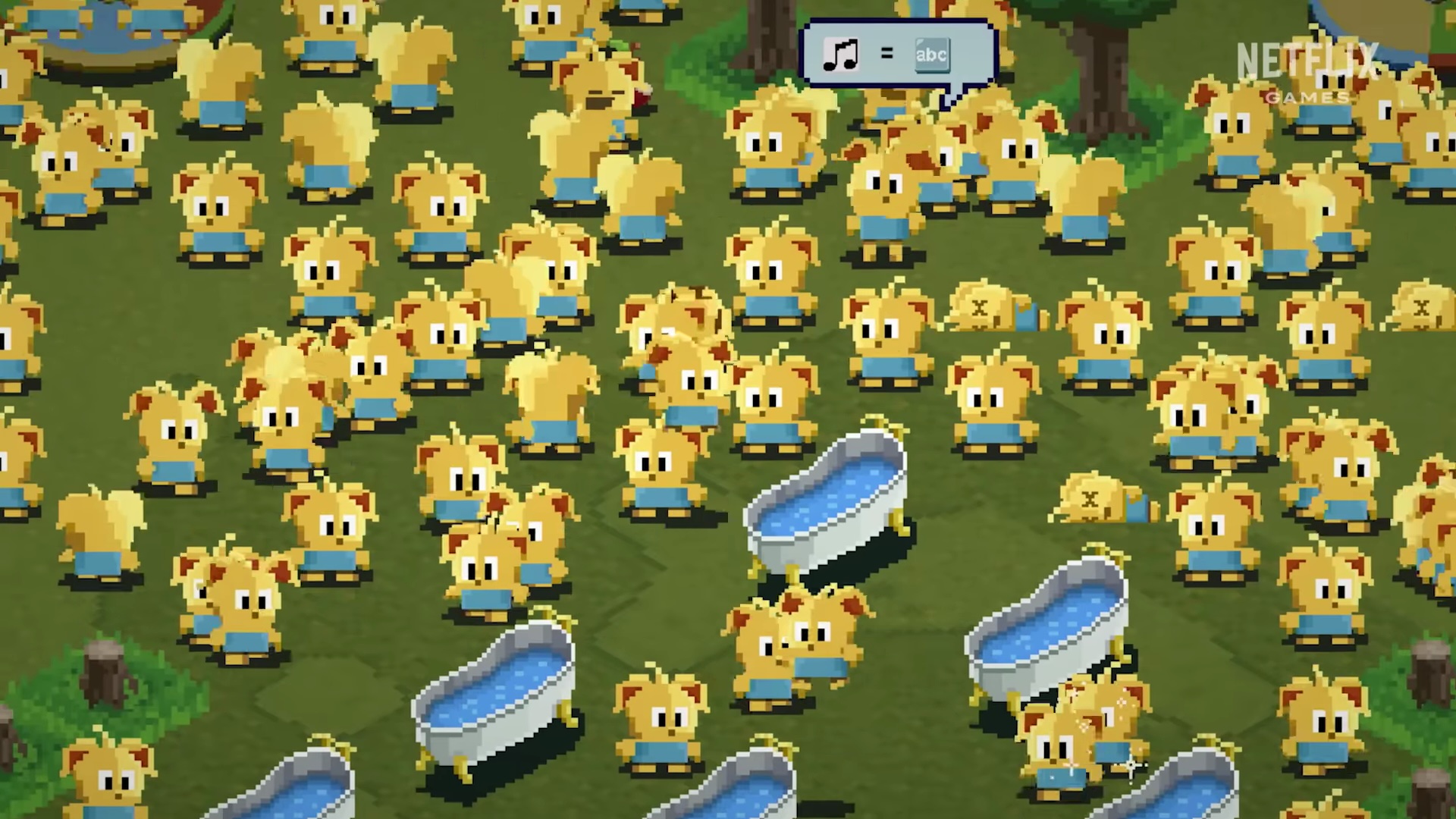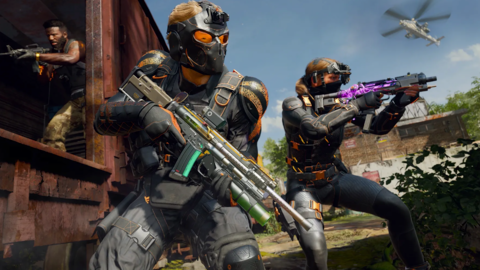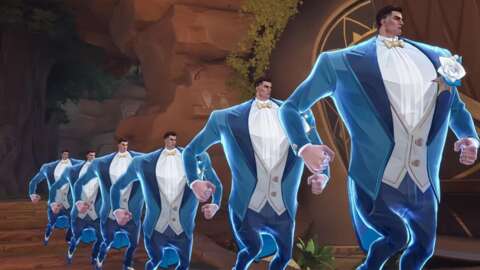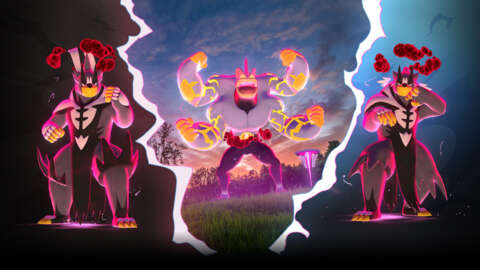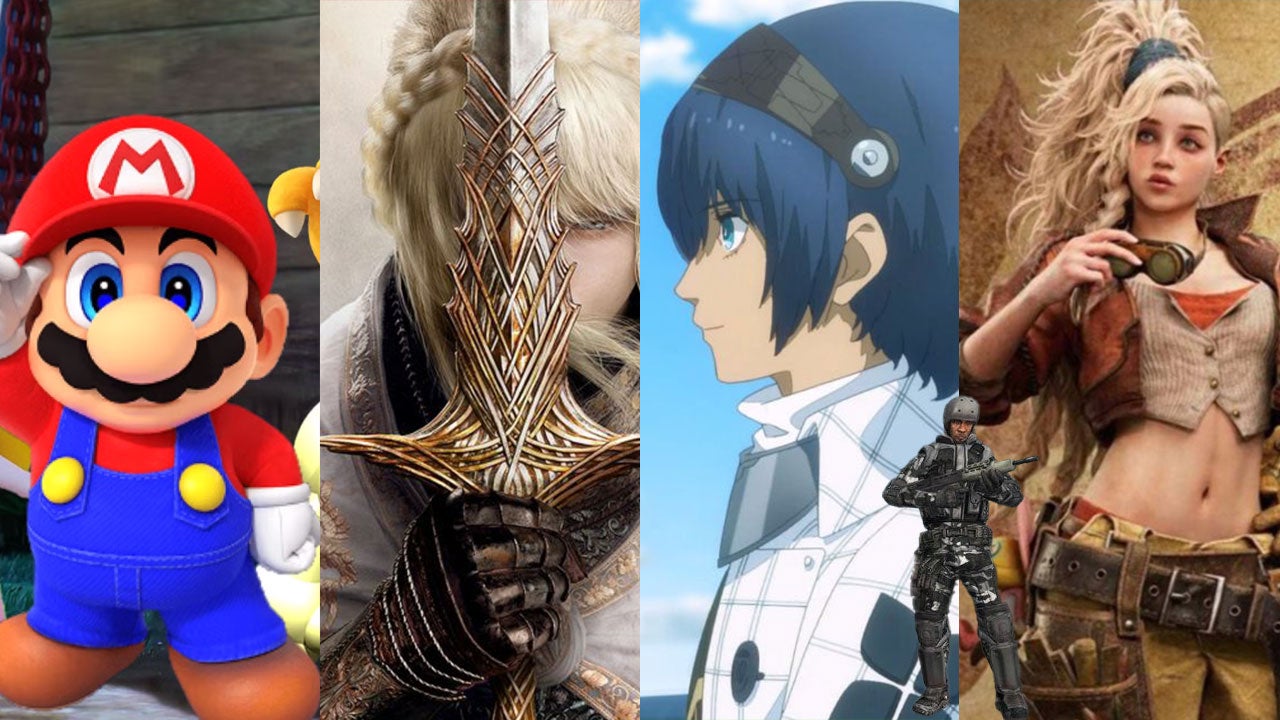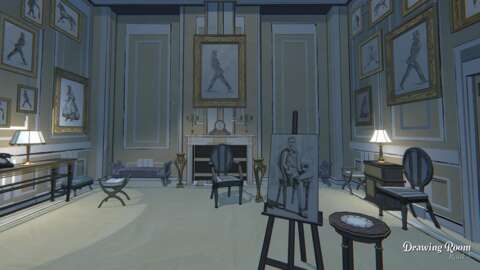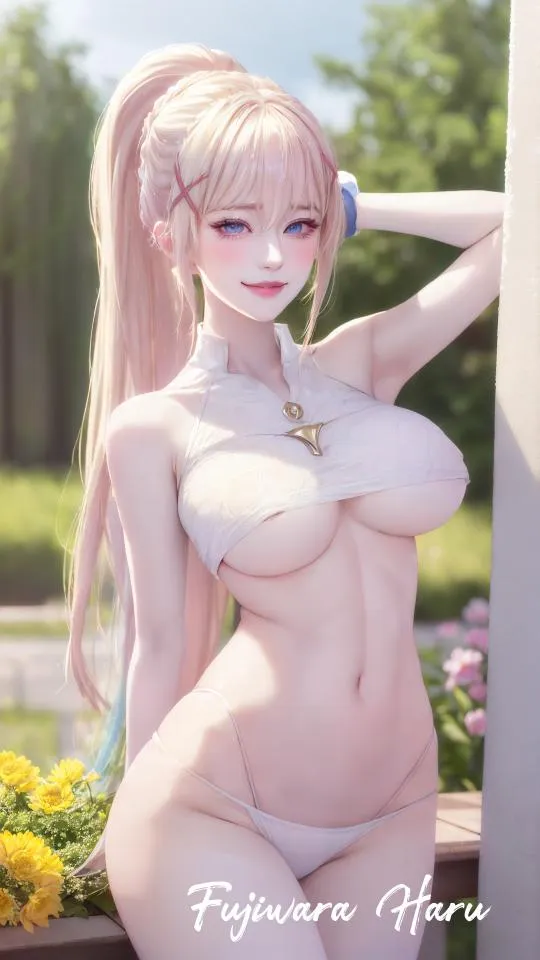
Netflix only promoted Sean Krankel to the role of general manager of the streamer’s burgeoning “narrative games” division a few weeks ago, so he’s still working on his elevator pitch for exactly what “narrative game” means at Netflix. But he knows one thing: After working on the newly released Black Mirror tie-in game Thronglets with the team at Night School Studio, which he co-founded in 2014 and was acquired by Netflix in 2021, the MO of developing new narrative games has unlimited potential.
Night School had bona fides, having developed Oxenfree, Oxenfree 2, Afterparty, and Next Stop Nowhere over the years, but Thronglets marked a radical departure from how Krankel had made games previously. The basis for Thronglets was born directly out of Charlie Brooker’s script for the season 7 episode “Plaything,” which returns to the fictional game studio Tuckersoft from 2018’s interactive special Bandersnatch. In the new installment, a young games journalist previews Thronglets, the new life sim from mad-genius developer Colin Ritman (Will Poulter), only to discover the digital critters inside are actually alive. But to tell a worthy follow-up to the interactive Bandersnatch, Brooker had a second idea: He wanted to produce a playable version of Thronglets. That’s where Krankel and Netflix’s gaming division stepped in.
Thronglets, the real one, plays like a life simulator from the ’90s, but under the surface is a current of Black Mirror-friendly storytelling that was a sweet spot for Night School. Polygon sat down with Krankel before the launch of Black Mirror season 7 and Thronglets, out now on iOS and Android, to talk about the welcome chaos of developing a game in tandem with an episode of TV and how the game forecasts the future for Netflix Games.
This interview has been edited and condensed for clarity.

Polygon: Thronglets was born directly out of Charlie Brooker’s script for “Plaything.” Charlie hoped that whatever appeared on screen in the episode could be actually playable, and Netflix was in a position to connect you two to make that a reality. Obviously, elements changed and there was tons of collaboration, but where do you even begin turning a fictional concept into a mobile game that can stand on its own?
Sean Krankel: It was maybe the messiest process for building a game that I’ve ever participated in. In a fun way! But it was messy because you had these two competing ends of a spectrum and we knew we wanted to fall somewhere inside of that spectrum. At one end, there’s a simulation in the episode, and ultimately it is a life simulation that should feel fairly chaotic and it evolves and learns and can be dramatically different depending on who interacts with it. At the other end of the spectrum, we wanted to tell a story, and we wanted to let people interact with the story.
As a studio, I think we always try to find new ways to let people have agency inside of a story. And so having a story that made any sense, and then merging it with these disparate game mechanics, like life sim or city builder, was pretty difficult in the beginning.
A bit of an “aha!” moment that the team had early on was that we could map the journey of the player toward the journey of civilization and break it down into acts and look at everything from the first single-cell organism and then go all the way through the industrial revolution and the phases that we’re in now. Then it was like, How do we do a playful parody that’s kind of satirical based on that and have the systems push and pull at that? That was the moment where we were on to something, where we could have these toys that feel like nontraditional narrative game toys, but have them feed what is ultimately still a very narratively driven thing. Fortunately Charlie was just really open to that. We could have had that shot down, I think, or he could have been less than into it.
In the world of the show, Thronglets was produced in 1994, a heyday for the Will Wright Sim titles. But your version of Thronglets isn’t really a modern spin on SimAnt or whatnot — it’s not a total sandbox and ultimately has an ending. That seems like a tough line to walk with the player.
Yeah, and I think we wanted to make sure that we didn’t betray fans of those other games that are more systems-driven. It should still be fun on its own and have a game loop that feels really satisfying, but also have a story.
We looked at every variant of The Sims as well as a lot of Lemmings, just like the behaviors and the art style of Lemmings. And the cool thing with Charlie is that he, before all of this, he was a games journalist years ago, and so he had very particular thoughts, not just on the types of games that could inform this, but even just the aesthetics of what could inform this. When you read the script, you see mentions of this character having Aphex Twin posters hanging in the background. It really paints a picture of exactly this mid-’90s thing, not just the game creator but the games journalist that ends up getting the build of the game.
So we looked at games that had a satisfying, I hate to be reductive about it, but a “number go up” core to them where you’re just like, Let’s grow and push forward. We thought we could add the added ingredient of “at what cost?” At what cost are you making said number go up?

While we see a bunch of Thronglets in the episode, we don’t see too much of Walker, the main character, actually playing it. Did the play style evolve as you found that sweet spot between life sim and narrative game?
The most difficult space for us — and again, we were very fortunate that Charlie let us play in this space — was how do we take the abstractions of what were in the episode, of how people were talking to the throng, which — in the episode it’s because there’s a lot of acid involved, and then after that there’s, like, bio-interfaces, and it’s a very strange journey that the humans go on with the throng in the episode. And so we were like, Well, we can’t ship the game with acid, so what’s our next best thing that we can do?
We came up with more of this terminal interface and treated individual thronglets as a very different thing than speaking to the singular throng. And whereas the individual thronglets were cute little sort of individual pets on their own, this other singular voice was more like the greater good that was learning from us as its parent or best friend or God, as it were.
Once we got that device in place and Charlie agreed to it, that really was what afforded us the opportunity to dive into what I think was so special in the episode, which is about the relationship. It’s not necessarily the game. The game is just the mechanism by which the actual episode story takes place. We want the player to have a similar feeling. If we were stuck with just the simple mechanics of feed, bathe, grow, I don’t think we could have done that. So we needed a way to be able to talk to the cast.
Managing the thronglets is pure chaos and I was relieved that, unlike in “Plaything,” I could turn the game off and not worry that all those li’l guys would die in the interim. But I also could imagine a version of the game that’s like that. How did punishment factor into remaining faithful to the episode?
So we debated a lot of that for a while. There were versions of this where the longer you left them, we were killing them off in the background. We tested some versions of that and punishment kept coming up as a thing where we’re like: There’s a light version of making the player aware of pain and sacrifice, but making them bounce off the game altogether is not something we wanted to do. So we actually pumped the brakes on a lot of that stuff.
At one point, one of our directors, Andy Rohrmann, who has been our composer for years, and he’s a co-director on the game, he started referencing that episode of I Love Lucy where there’s a chocolate assembly line. […] That specific episode is how we wanted it to feel, where it was comedically problematic how quickly either they’re replicating, dying, being sad, whatever, but not a kind of thing where you’re so frustrated where you’re going to put the game down. So we just had to find that balance. And it really is just playtesting — a lot of playtesting — and finding out what’s too much and then finding a happy medium.

Does the game connect directly with the episode?
There is a QR code in the episode somewhere. There are other QR codes hidden in materials out in the world right now, and there are more to come. The QR codes continue to unlock some of that BBC-style footage that you see at the beginning of the game. And we were able to work with Charlie’s creative team on building out some really robust fake documentary stuff with that team and with Asim Chaudhry, who you see in that opening scene. So that’s the interplay and it does unlock directly in the game when you find these QR codes in the world. Some are very ARG-ish hidden.
You recently became the head of Narrative Games at Netflix. I know that’s a key area for Netflix’s strategy going forward, on top of I believe “mainstream” licensed games like Grand Theft Auto, party games, and more kid-friendly games. What is a narrative game? Is the objective to develop more games that link up with shows as closely as Thronglets?
Yeah, it is a squishy area right now, and it’s one that even yesterday I was sitting in a meeting going, “What are the boundaries of that? What does that look like?” I don’t want it to appear just to be branching-dialogue games. And as you’ve seen with Thronglets, we’ve found other ways and other player verbs to let people interact with a story. And also for that story to be very directly tied — the game itself is like an artifact from the episode, and so it couldn’t live without the episode. But also I think that to me, the underlying ethos for it should be that the player verbs inside of the game are intended to yet to give agency inside of a story.
I think a JRPG, especially a classic one, probably falls into the narrative games vertical. I think the presentation that we’re familiar with from the Telltales and Supermassives and Don’t Nods of the world, that falls into narrative games. I think that what you see with Thronglets falls into narrative games. I think the biggest area that we want to start to look at is: Mobile has been exciting and awesome, and we can do experimental and cool interplay there, but also as we look at games on TV and cloud, I think there’s a big opportunity there. So not just for single-player narrative games; there could be multiplayer narrative games. Fundamentally, it’s: Do the mechanics of the game or does the design of the game serve pushing a story forward or pushing and pulling inside of a story in a compelling way versus the other way around? […]
I think that as we look ahead, the idea of these very bespoke eventized experiences that can happen via the platform and only on the platform are the things that excite me. It means that it’s hard to templatize stuff. It means it’s hard to just go, Oh, let’s keep doing the same thing over and over again. And the way our teams think about it more is: How would [Disney] Imagineers design a ride? You really have to make sure that it’s very novel each time coming out of the gate. It has to be a new way to interact with something. It means it’s going to be harder to do, but hopefully more resonant each time.
Source:https://www.polygon.com/q-and-a/557920/black-mirror-thronglets-netflix-games-secrets